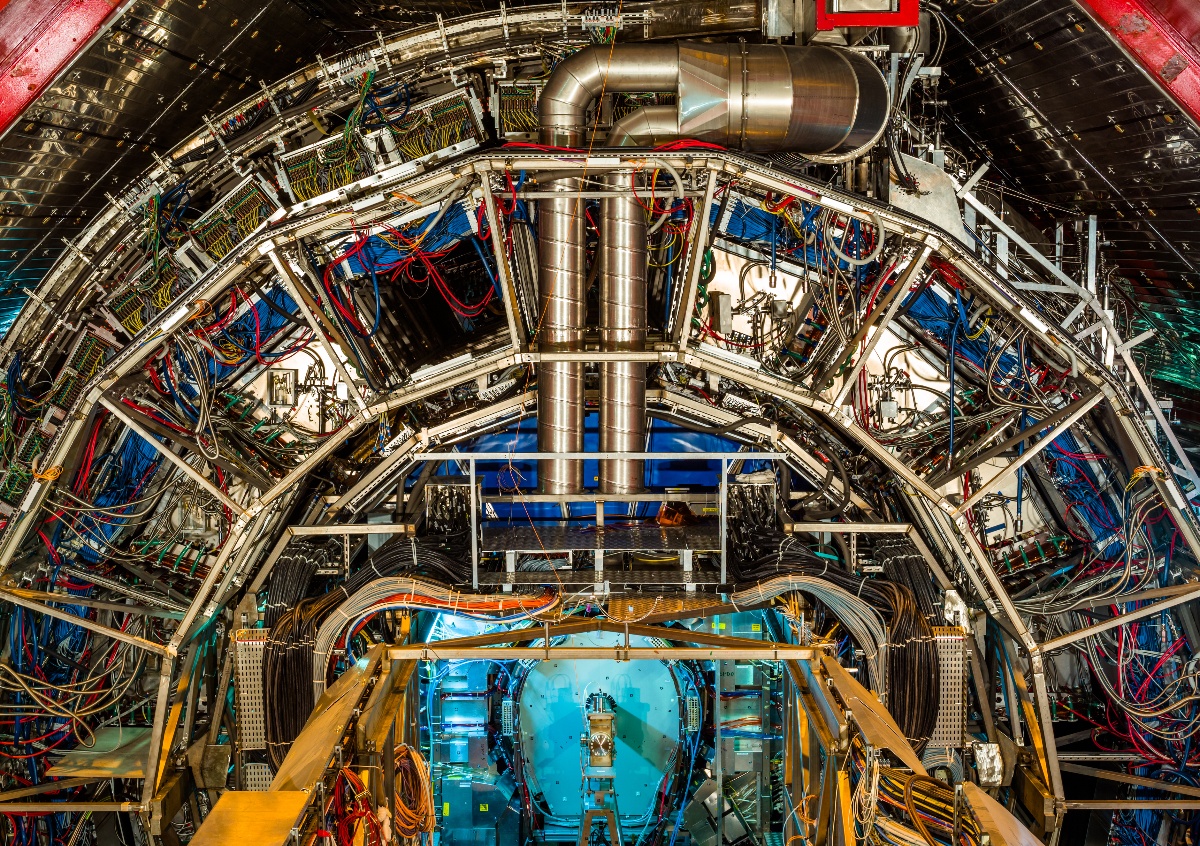
Note: this interview was condensed and edited for clarity.
For some people, the call to a particular field of study arrives early. For Dr. Allison McCarn Deiana, the desire to study and teach physics grew in high school and strengthened throughout college.
Now she is an Assistant Professor in the Department of Physics at Southern Methodist University, researching high energy particle physics through the ATLAS Collaboration. Today, she's sharing more about her journey in the field of physics and exploring why the field of physics is so valuable.
 What courses do you teach at SMU and how long have you been teaching here? What was your degree and where did you receive it?
What courses do you teach at SMU and how long have you been teaching here? What was your degree and where did you receive it?
I’ve been a member of the physics faculty at SMU since fall of 2018, and I’ve taught here for two semesters. Both semesters, I’ve taught introductory electricity, magnetism and optics in the class designated for life science majors. This coming semester, I’ll be teaching classical mechanics at the graduate level. I received my undergraduate degree from North Carolina State University, my doctorate from the University of Illinois at Urbana-Champaign, and engaged in postdoctoral work at the University of Michigan.
Did you always want to work/study in the field of Physics, or did you have other plans?
I settled on the goal of studying physics while I was in high school, and haven’t changed course since. I knew as an undergraduate that my dream was to one day become a professor of physics, and I am beyond happy that I have been able to realize this dream at SMU.
What initially interested you in teaching on a graduate level? What brought you to SMU?
In general, graduate school is incredibly challenging, and I know that as a student it’s easy to feel overwhelmed. The content is difficult, but I want to be the kind of teacher that helps students see that it is within their capabilities to master.
As for what brought me to SMU in specific, it was primarily the strength of the department’s research program with the ATLAS Collaboration. I have been a member of the ATLAS Collaboration for over a decade now, and I’d always been impressed with the quality of SMU faculty, post-docs and students that I’d encountered.
What research have you been involved in at SMU and elsewhere?
Since 2008, I have been an experimental high energy particle physicist, working in the ATLAS Collaboration at the CERN Large Hadron Collider. My research over the years has been focused on studying Higgs bosons and the third generation of fundamental particles (e.g. tau leptons, top quarks, and bottom quarks). My current physics interests involve using the Higgs boson as a tool for discovery, specifically through the search for di- Higgs and top-associated Higgs production. In addition, I’ve been working on firmware developments for the upgrade of the ATLAS detector’s liquid argon calorimeter.
What do you most think is most unique or valuable about the Physics Department at SMU?
The physics department at SMU is quite small, but has a strong focus on research. This means that there are rich opportunities for graduate and undergraduate students to get directly involved in international research. The size of the department also enables the students to have more direct mentoring time with their advising professors.
What is the community life like in the Department of Physics and at SMU more generally?
It’s a friendly department, and one in which pretty much everyone knows everybody else. We have frequent social activities during the school year, such as “Physics Phriday Lunch” and the coffee hour every Wednesday. The undergraduates also have a chapter of the Society for Physics Students (SPS) and the activities they organize are available to students at the graduate or undergraduate levels.
Why do you think Physics is an important and valuable field to study?
Have you ever heard the saying, “If you only have a hammer, everything looks like a nail”? For me, this touches on why the study of physics, and the pursuit of understanding of the physical universe, is an important part of human endeavour. The connection between pure science and application is not always easy to see from the outset, but each advance in understanding can lead to new tools for our toolbox that will enable us to address the problems of our world more effectively.
What aspect of Physics do you think poses the biggest challenges for students?
This really depends on how advanced the student in question is in their study of physics. At the introductory level, I think calculus and spatial reasoning can be a challenge. Further on, I’d say a big challenge is conceptualizing abstract concepts. When something clicks, though, I think it’s worth the effort to get there!
Are there any emerging trends or developments in the field of Physics that you find exciting?
I am most excited by the continuing developments in machine learning. The application of machine learning has improved our ability to search for new particles in the ATLAS Collaboration, and there are some new ideas that I’m eager to explore.
Are you interested in learning more about the research opportunities in physics at SMU? Learn more about the Physics Department at SMU through our comprehensive resource.

